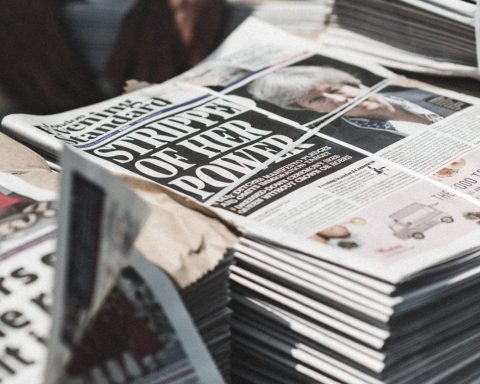
Ask any doctor, and they’ll tell you that talking to patients can be difficult. Mind you, ask any patient and they’ll tell you that talking to doctors can be really difficult too. The Consultation, that mythical and commonplace occasion during which both processes occur, can sometimes feel like a shared illusion of communication,1 which leaves both parties none the wiser.
We sit patiently, waiting for “usable intel,” or grab hold of the first thing we can.
Doctors are routinely trained in communication skills now, although there are times when what I really want is to send my patients on the course. Even as I listen, I find myself willing the person opposite to give me just a little more to work with, or a little less. There are so many potential barriers to understanding each other, from the lack of a shared language, verbal or non-verbal, to a divergence of expectations or simple time pressure. And yet, I have a suspicion that what underlies our difficulties is often something else.
Patients sometimes talk in ways that make little sense to us, repeating seemingly unimportant details, abruptly changing subject and even contradicting themselves. We sit patiently, waiting for “usable intel,” or grab hold of the first thing we can. Even when a coherent thread emerges and we offer a diagnosis and management plan, the response can be surprisingly cool. What escapes us is that people talk like this for the same reason they hold their hand in front of them on first meeting someone: not to have it scrutinized, but to bridge a gap.
In general, people overestimate the extent to which this is necessary.2 We worry that strangers are different and won’t understand or like us, and this can make it difficult to talk about things that matter, especially with someone as famously busy as a doctor. Judging by their comments, patients regularly worry that they’re wasting our time or that we’ll think they are, and much of what they say is intended simply to engage our attention and sympathy. We tend to question our competence and fret about missing a diagnosis, but the person in the other chair is usually more concerned to know whether we’re listening and taking them seriously.3
Connecting is the first of Neighbour’s five checkpoints in the consultation,4 not just a verbal or literal handshake, but rather something that must be maintained in order for effective communication to take place. This is what is meant by rapport, a state of mutual responsiveness to which both parties contribute,5 but which in a medical context is primarily the doctor’s responsibility.
Curiously, the research literature on rapport seems largely based on data from police and counter-terrorism interviews, which has to be a tougher crowd than any Monday morning surgery! Broadly speaking, techniques used to promote rapport fall into three categories: personalising an interaction; presenting an approachable demeanour; and paying attention.6 In the consultation this covers the familiar ground of keeping an open posture, nodding, summarising, asking about patients’ concerns and dragging our eyes away from the computer. It also includes asking questions that demonstrate interest in someone’s circumstances, using their name and, in small doses, talking about yourself.
…rapport is about… acknowledging a patient, not just as a puzzle for us to solve or an obstacle to negotiate before we can go home, but as someone like us with reasonable concerns and a valid claim on our attention.
These are all things we can do without too much difficulty, and they may well improve our consultations: doctors do generally listen and try to help, but often give little indication of it, leaving patients to project their anxieties onto the blank screen of a resting face. At its heart, though, rapport is about attitude rather than skill. It means acknowledging a patient, not just as a puzzle for us to solve or an obstacle to negotiate before we can go home, but as someone like us with reasonable concerns and a valid claim on our attention.7 In this sense, it depends less on particular “moves” than on values like honesty, empathy, autonomy and respect.8
Being able to talk well with patients, especially those with whom we don’t naturally get on, is an ability at once mundane and elusive, but it is important, the hallmark of the “virtuoso GP.”9 And like so many other important things, it boils down to a simple principle: seeing and hearing someone as another person and letting them know that they’ve been seen and heard.
References
- “The great enemy of communication,we find, is the illusion of it.” Variously quoted and attributed but originally from an article entitled “Is Anybody Listening?” by William H. Whyte published in Fortune magazine, September 1950
- The Power of Strangers: the benefits of connecting in a suspicious world, Joe Keohane, Penguin, 2022
- For a recent illustration of how patients can assume their doctor won’t help, see BMJ 2022;379:o2841 http://dx.doi.org/10.1136/bmj.o2841
- The Inner Consultation: how to develop an effective and intuitive consulting style, Roger Neighbour, 1st edition Springer, 1987
- The Naked Consultation: a practical guide to primary care consultation skills, Liz Moulton, Radcliffe, 2007
- Gabbert F, Hope L, Luther K, Wright G, Ng M, Oxburgh G. Exploring the use of rapport in professional information-gathering contexts by systematically mapping the evidence base. Appl Cognit Psychol. 2021;35: 329–341. https://doi.org/10.1002/acp.3762
- Intelligent Kindness: Reforming the culture of healthcare, John Ballatt & Penelope Campling, RCPsych publications, 2011
- Rapport: the four ways to read people, Emily Alison and Laurence Alison, Vermillion, 2020
- Senior T, Virtuoso General Practice,
Featured photo taken by Andrew Papanikitas, 2023








